As we become increasingly reliant on modern conveniences, the idea of surviving in the wilderness with limited resources can seem daunting at best and impossible at worst. Yet, the call of the wild beckons to many of us, inspiring thoughts of adventure and self-reliance. But just how long could the average person survive in the wilderness without the comforts of modern society?
An average person’s survival in the wilderness relies on several factors, including physical health, experience, availability of supplies, and particular wilderness location and conditions. Generally, humans can survive for a few days, weeks, or even months with access to food, shelter, water, and some basic survival abilities.
Read on to learn the factors that might change a person’s survival rate and tips on being ready for the unforeseeable.
Quick Navigation
- How Long Can the Typical Person Last in the Wilderness?
- Factors That Affect Survival in the Wilderness
- Importance of Mindset and Attitude
- Basic Wilderness Survival Skills
- Most Essential Survival Items
- Tips for Increasing Survival Time in the Wilderness
- Conclusion
How Long Can the Typical Person Last in the Wilderness?
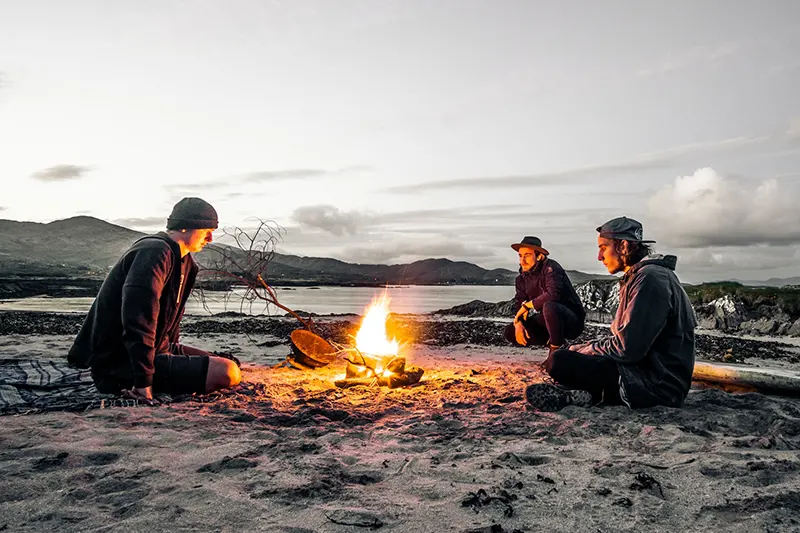
According to the rule of 3’s, the average person can live for 3 minutes without oxygen, 3 days without water, and 3 weeks without food.
The average person’s survival rate in the wilderness depends on various factors. These factors include the level of expertise, physical well-being, comprehension of survival skills, availability of supplies, and location.
The human body will start to endure dehydration, malnutrition, exposure to the weather, and tiredness beyond this first time, which may result in serious health issues and death.
People with survival skills may live in the wilderness for weeks, months, or even years.
Factors That Affect Survival in the Wilderness
The following are typical factors that might make it more challenging (or easier) to survive in the wilderness:
Location and Weather Conditions
Regardless of your skill level, your location significantly impacts your reasonable chance of survival. Are you making it through the winter in the rocky mountains? Or the summertime Atacama Desert?
Our extraordinary ability for endurance and resilience is one of the reasons why humans have been successful as a species. Nonetheless, certain regions are far more favorable and conducive to existence than others.
Physical Condition of the Person
When someone is out in the wild, their fitness level can really make a difference when it comes to staying alive. You’re more likely to survive if you are in excellent shape and have plenty of stamina.
Physical fitness may aid with duties like obtaining more food and enough water, and defending oneself against predators.
Availability of Food and Water
Our bodies are designed to get energy from food and liquids to regulate body temperature and facilitate digestion.
Although you may survive for an extended period without food, having something to eat makes you feel better emotionally.
Food in the wild may be in the form of plants. A good knowledge of deciduous and coniferous trees and knowing how to identify edible plants is valuable. Start with knowing what poison ivy, black oak leaf, and maple leaves are.
Access to Shelter
The shelter is vital for surviving in the outdoors. A person’s capacity for survival may be significantly impacted by the accessibility of natural shelters such as caves, overhangs, and fallen trees.
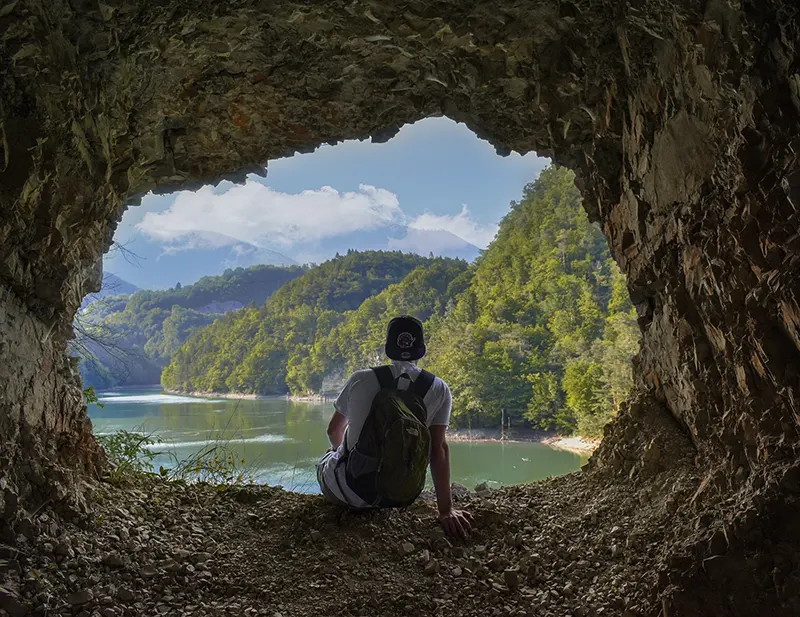
If no natural shelter is available, it is crucial to construct a makeshift out of the resources at hand.
Presence of Predators and Other Dangerous Animals
Surviving in the wilderness may be seriously threatened by predators and other harmful creatures. Predators sometimes attack most people, inflicting severe harm or even death.
Knowing the kinds of wildlife that inhabit the region can help you take the appropriate safety measures, such as keeping food away from your camp.
Moreover, knowing how to defend oneself against predators might be crucial in a wilderness survival scenario.
Importance of Mindset and Attitude
Actual survival is difficult. Your wits are constantly being tested both physically and mentally. Failures and setbacks are inevitable, so having a good attitude and being resourceful is crucial.
We know just how essential nature is to our well-being but think about being in the middle of nowhere, surrounded by the Rocky Mountains and little greenery.
How will you proceed? What do you do first? Build a shelter or go food scavenging? Attempt to find water or start a fire? These are the thoughts and abilities needed to really live.
The capacity to handle stress in emergency circumstances is crucial for survival. Your best survival gear is, without a doubt, your mindset.
The likelihood of survival relies more on how each person handles stress than on the threat, environment, or kind of emergency.
Basic Wilderness Survival Skills
To increase your chances of success in the outdoors, take into account these crucial survival skills:
Finding and Building A Shelter
The weather becomes your primary worry when you spend much time outside. Even if you’re just a bit damp, you might rapidly get chilly.
Prioritize seeking shelter if the weather worsens and the night falls. The strategy might be as simple as hiding behind a huge tree trunk or as complex as building out of branches.
Yet, it’s crucial to adjust to your specific situation. Finding shelter is more accessible in a temperate climate.
Starting A Fire
The average person thinks they can live for two weeks in the woods, yet the majority of them are unable to make a fire.
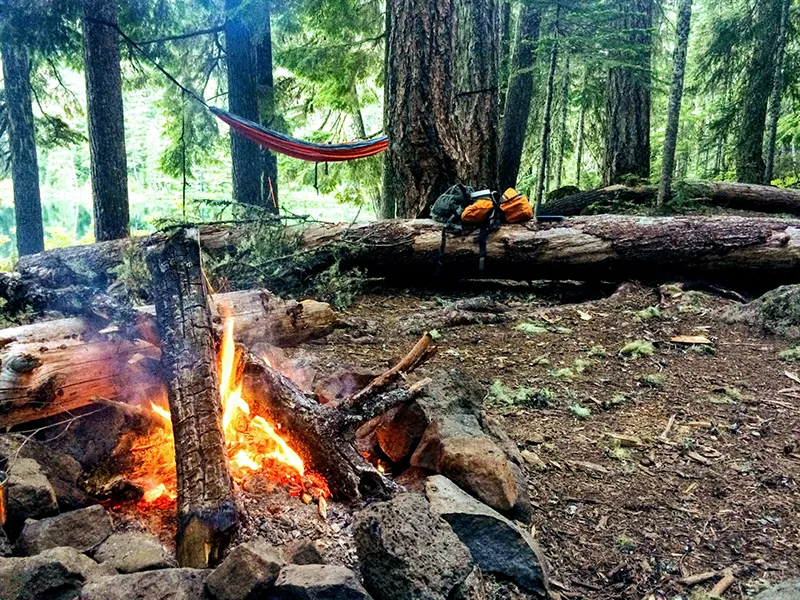
Starting a fire is the second most crucial survival skill since it helps prepare food, keep other predators at bay, remain warm in colder areas, and even signal for aid.
Starting a fire may include sticks or more significant pieces of wood, previous animal excrement, dead grass, and more. You want dry fuel; avoid anything wet from water, rain, or too green, such as recently cut grass or leaves.
Finding and Purifying Water
Finding a clean water source is the next step after ideally packing a water filter, water-purifying drops or tablets, or both.
Flowing, translucent water is preferred to water that looks stagnant, whereas cold water is preferable to warm water. It is much preferable to gather snowfall or rain.
Suppose you find yourself in the wilderness without purifying your water. In that case, you may attempt improvised techniques like squeezing it through a T-shirt, gathering it in a basin, and skimming the purer water off the top.
Most crucial, fill up your water containers anytime you find a water source. You never know when you’ll be able to locate water again.
Foraging for Food
Foraging, the process of locating food sources in the wild, may be necessary for lengthy wilderness journeys.
In this situation, knowing edible plants, like knowing the difference between deciduous and coniferous trees, might save your life. Deciduous trees’ leaves fall off yearly, and coniferous trees have scales that don’t fall.
Humans survive without water for about three days but around 30 days without food. Foraging helps add calories if circumstances worsen, even if it shouldn’t be your first concern in a survival crisis.
Navigation and Signaling
The ability to warn all possible rescuers that you need assistance makes signaling one of the most special survival skills.
You can be discovered with fire, flashing lights, vivid color markers, flags, mirrors, and whistles. Three flames in a triangle configuration are a known distress signal.
Use a conventional signal mirror only when seeing a jet or people in the distance. Employ a strobe light in an emergency to draw nearby people’s attention at night.
Most Essential Survival Items
These things will enable you to survive regardless of your level of expertise.
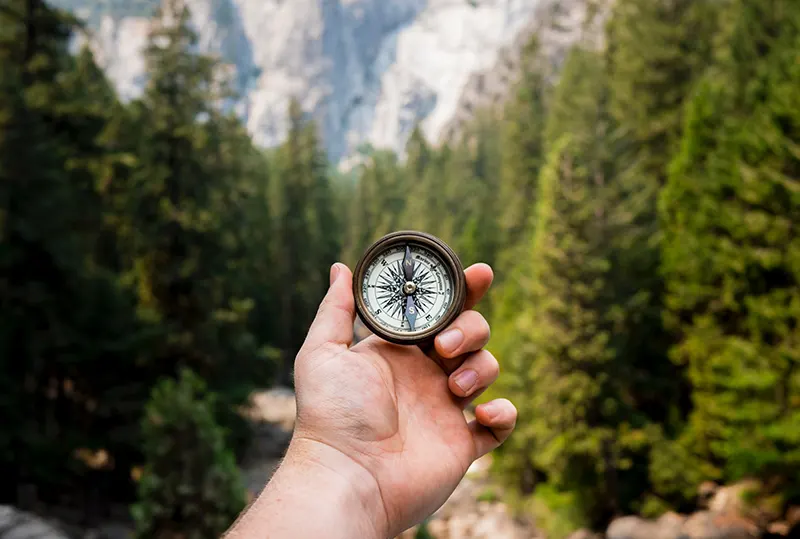
Map and Compass – If you’re going into the woods, you must have a map. You may need to visit other points of interest or make a self-escape, so the maps and compass will be convenient if you become completely lost.
Survival knife – One of your most essential tools for wilderness survival is a knife, whether you plan to use it for fishing, hunting, or constructing a shelter. Have a sturdy fixed-blade knife that functions as a multi-tool and is small enough to put in your survival kit.
Fire Starter – You may use a flint, steel, lighter, and matches. But keep in mind that they might all fail. It is thus essential to develop particular fire-starting abilities that will be useful if you run out of fire starters.
First Aid Supplies – Always incorporate extra survival essentials while planning for the woods. These might include bandages for more extensive wounds, fracture care supplies, and medicines.
Flashlight – You must carry a bright flashlight or at least more than one in case one dies during an emergency. Lightweight LED headlights typically have a battery life of 20 to 40 hours.
Water purifier – Obtaining and purifying water of microorganisms and other dangerous impurities need a water filter or purifier.
Paracord or rope – A 50-100 foot length of rope or paracord may save your life in any survival or outdoor circumstance. It may be used in several ways, such as the construction of shelters, the placement of traps, fishing, and the binding of tools.
Tips for Increasing Survival Time in the Wilderness
The following are some essential tips to get you through the wild.
1. Evaluate the scenario.
Let’s imagine that you are hurt or lost. Should you continue where you are or try to return to the trail? Should you part ways with someone else or stay together?
What path you are on and what time of year might also impact your selection. You may feel more motivated to stick it out if it is a well-traveled route during peak hiking season when other hikers are likely to join you.
There are two ways to go if you want to keep traveling and seek assistance: uphill or downhill.
Going up to determine your location is one option if the terrain permits, and you can see above the treeline.
The downward route assumes you will eventually reach a river, and if you follow a river, you will likely locate a trailhead to assist you in returning to civilization.
2. Treat wounds or injuries as best as you can.
Injuries may occur with just one slip-up, particularly on challenging, damp, or densely wooded terrain.
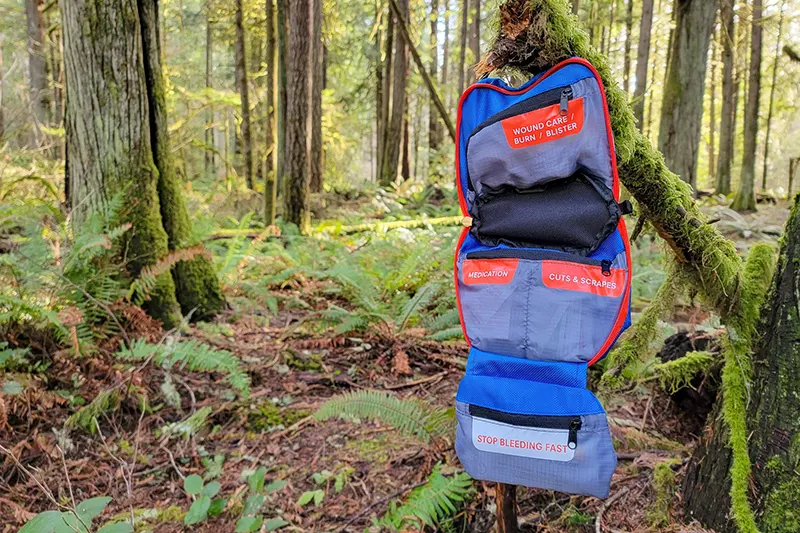
When you start on a trek, ensure you know how to utilize everything in your first aid bag. Put all that first-aid training to good use while you’re outside dealing with an injury.
Yet you should also feel at ease improvising. Injury management in the great outdoors requires both forethought and improvisation.
3. Practice safety measures for fires.
Knowing how to start and sustain a fire might be helpful when you’ve been gone for a long time and need to prepare meals or stay warm. But, practicing fire safety is crucial, mainly when wildfire season is in full swing.
Clean the space you want to construct your fire in. Embers are readily picked up by the wind and set anything on fire.
Plan to travel two more hours to your intended sleeping location after supper, mainly if you cooked anything since the fragrance might linger and attract animals.
4. Respond carefully to wildlife.
Making noise while you walk is the most straightforward approach to avoiding bears. To do this, you may fasten a bear bell to your rucksack. They will avoid you if you are too loud. They also like to avoid direct contact.
Nonetheless, there are instances in which you could come into touch with a hostile animal. This typically happens if you unintentionally shock or remove it from its young or food source.
Play dead when faced with grizzly bears by lying on your stomach and defending your neck. On the other hand, do not pretend to be dead among black bears.
Instead, fight back with everything you can, focusing your blows and kicks on the creature’s face.
Conclusion
Survival in the wilderness is no easy feat. The ability to find food, water, and shelter is essential, as is the knowledge of how to navigate the unpredictable and often harsh environment.
While some may possess the skills and knowledge needed to survive for extended periods, most of us would struggle to last more than a few days without access to the comforts of modern society.
However, by taking the time to learn survival techniques and practicing them in controlled environments, we can increase our chances of thriving in the wilderness and answering the call of the wild.
